Acid-staining concrete countertops is a popular technique to achieve a natural, earthy, and often marbled look that adds character and uniqueness to your kitchen or workspace. Acid stains react with the minerals in the concrete to create a variety of colors and patterns that can mimic the appearance of stone or aged, patinated metal. Unlike paint or surface stains, acid staining is a chemical process that permanently alters the color of the concrete. This makes the technique both durable and versatile, allowing for a long-lasting finish that won’t peel or chip off. However, to achieve the best results, careful preparation and attention to detail are essential.
Before beginning the acid staining process, it’s important to assess the condition of the concrete. Concrete countertops must be fully cured, which usually takes about 28 days after they are poured. During this time, the concrete should be protected from contaminants, such as oil or grease, which could interfere with the stain. If the surface has been sealed or treated with any products, these will need to be removed through grinding or the use of a chemical stripper. Even small contaminants can affect the way the acid reacts with the concrete, resulting in uneven or blotchy staining.
The next crucial step is cleaning the concrete thoroughly. Any dust, dirt, or debris left on the surface can interfere with the stain. Use a degreaser to remove any oils, and then scrub the surface with a concrete cleaner. Rinse the countertop thoroughly with water to ensure all cleaning products are removed. A clean, bare surface is essential for the acid stain to react properly with the concrete, so don’t skip this step.
Once the concrete is clean and dry, you can begin masking off any areas you don’t want to stain. Use painter’s tape and plastic sheeting to protect walls, cabinetry, or any other surfaces that might come into contact with the acid. Acid stains can be difficult to remove from unintended surfaces, so taking the time to properly mask off the area will save you from having to clean up unwanted messes later on.
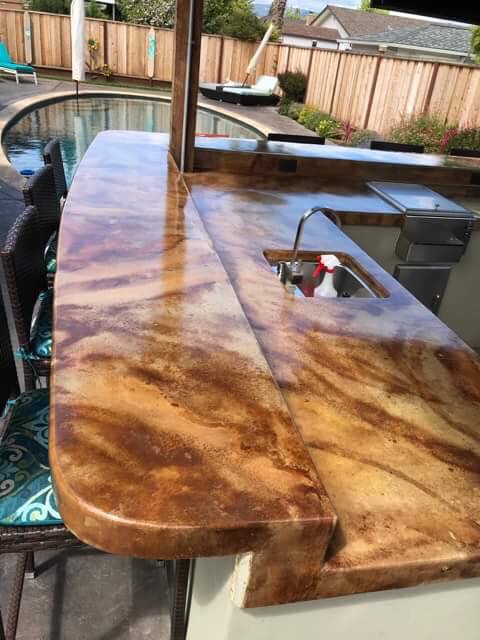
When it comes to choosing an acid stain, there are many colors and effects to consider. Acid stains typically come in earthy tones such as browns, tans, terra cottas, greens, and blues. The final color depends on the composition of the concrete and the length of time the stain is allowed to react with the surface. It’s a good idea to test the stain on a small, inconspicuous area or on a sample of the same concrete mix to see how the final color will turn out. Remember, the acid stain chemically reacts with the concrete, so once the color develops, it cannot be changed.
Applying the acid stain requires careful attention to detail. Use a plastic sprayer with acid-resistant components to evenly spray the stain onto the concrete surface. Work in small sections to ensure even coverage. It’s best to apply the stain in a random, circular motion to avoid visible streaks or lines. Some people also use sponges or brushes to create additional texture or effects. The acid will begin to fizz and react with the minerals in the concrete almost immediately, which is a good sign that the stain is working.
After applying the acid stain, allow it to sit for at least four to six hours. The exact amount of time will depend on the manufacturer’s instructions and the depth of color you want to achieve. During this time, the chemical reaction is ongoing, so it’s important not to disturb the surface. Once the desired color is achieved, you’ll need to neutralize the acid with a solution of water and baking soda or ammonia. This stops the chemical reaction and prepares the surface for sealing.
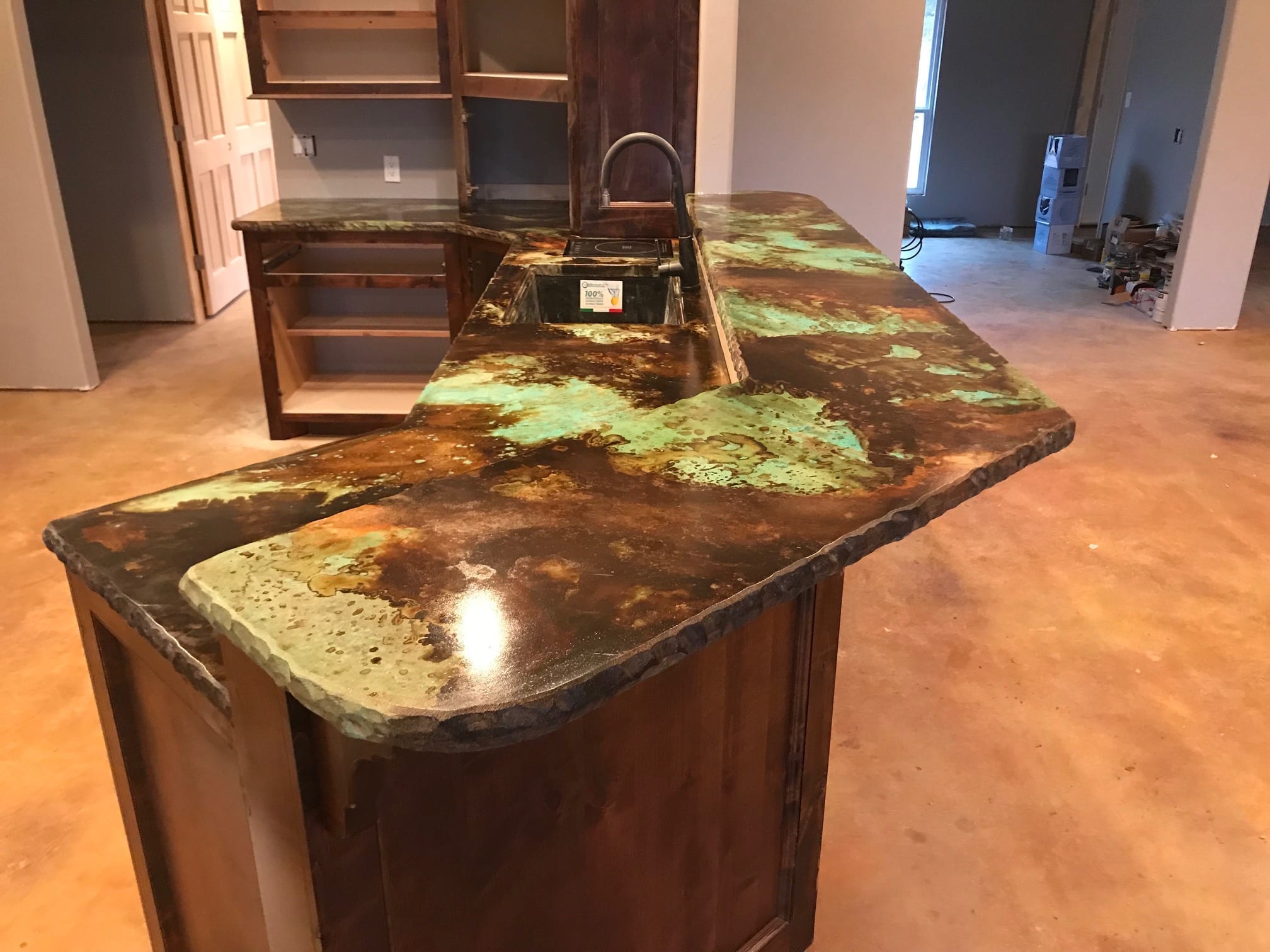
After neutralizing the acid, thoroughly rinse the countertop with water to remove any residue. It’s essential to ensure that no traces of the acid or neutralizing solution remain on the surface, as these could interfere with the sealing process. Use a wet/dry vacuum to remove the water and any debris left behind. Allow the concrete to dry completely before moving on to the next step. Depending on the humidity and temperature, this drying process could take anywhere from a few hours to a full day.
Once the surface is dry, you’ll likely notice some variations in color. This is part of the natural beauty of acid staining, as the final look is often marbled, mottled, or variegated. Some areas may be darker or lighter than others, which adds to the uniqueness of the countertop. If you desire a more intense or even color, you can apply a second coat of stain following the same process. Just be sure to neutralize and rinse between coats.
Sealing the stained concrete countertop is a critical step to protect the surface from stains, water damage, and wear. Concrete is naturally porous, so without a proper seal, it can absorb liquids and become stained or damaged. There are many types of sealers to choose from, including acrylic, epoxy, and polyurethane. Each offers different levels of protection and sheen, from matte to glossy finishes. If the countertop will be used for food preparation, it’s important to choose a food-safe sealer.
Applying the sealer is similar to applying the stain. Use a clean roller or brush to apply a thin, even coat of sealer over the entire surface of the countertop. Be sure to follow the manufacturer’s instructions regarding drying times and the number of coats required. Some sealers may require multiple thin coats to achieve full protection. Between coats, lightly sand the surface with a fine-grit sandpaper to ensure a smooth finish. Allow the sealer to fully cure before using the countertop.

Maintenance of acid-stained concrete countertops is relatively straightforward. Clean the surface regularly with a mild, pH-neutral cleaner and avoid harsh chemicals, which can damage the sealer over time. Depending on the sealer used, you may need to reseal the countertop every few years to maintain its durability and appearance. Some homeowners also apply a layer of wax over the sealer for additional protection and shine.
One of the biggest benefits of acid staining is its durability. Since the stain penetrates the surface of the concrete, it becomes a permanent part of the material. Unlike paint or topical stains, it won’t peel or flake off over time. However, the sealer can wear down in high-use areas, so periodic resealing is necessary to keep the countertop looking its best.
Another advantage of acid staining is the completely unique finish it offers. No two countertops will look exactly alike, as the chemical reaction between the acid and the concrete creates random, natural patterns and variations. This makes acid-stained concrete countertops a great choice for homeowners looking for a one-of-a-kind surface with character and depth.
Acid-stained concrete countertops are also a relatively eco-friendly option. Concrete is a sustainable material, and the staining process uses fewer chemicals than other methods of coloring or finishing surfaces. Additionally, concrete countertops can be made with recycled materials, further reducing their environmental impact.
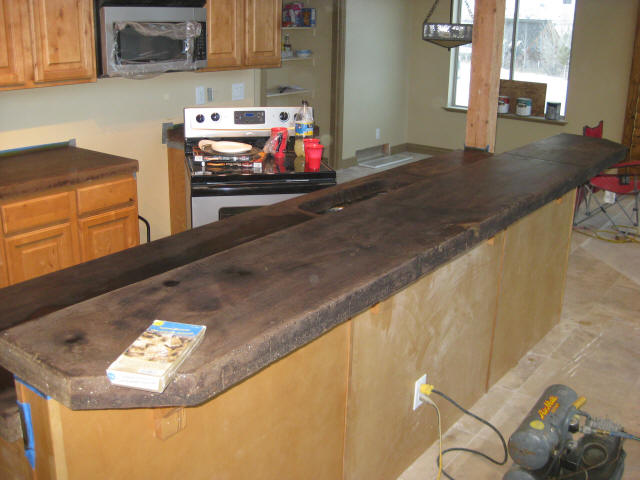
Common Mistakes to Avoid
One of the most common mistakes when acid-staining concrete countertops is failing to properly prepare the surface. Any dirt, oil, or grease left on the concrete can prevent the stain from reacting evenly, resulting in blotchy or uneven color. Always clean and prep the surface thoroughly before starting.
Another mistake is not testing the stain on a small area before applying it to the entire countertop. The final color can vary based on the composition of the concrete and the way it reacts with the acid. Testing the stain on a sample piece of concrete will give you a better idea of how it will turn out.
Skipping the neutralization step is another frequent error. After the stain has reacted with the concrete, it’s essential to neutralize the acid with water and baking soda solution. If this step is missed, the acid can continue to react with the concrete or interfere with the sealing process, leading to poor results.
Applying too much stain in one area can also cause problems. Overloading the surface with stains can lead to streaks or uneven coloration. It’s important to apply the stain evenly and work in small sections to avoid this.
Finally, not allowing enough drying time between steps can result in a poor finish. Patience is key when staining concrete countertops. Be sure to let the stain react fully and allow the countertop to dry completely before moving on to sealing.
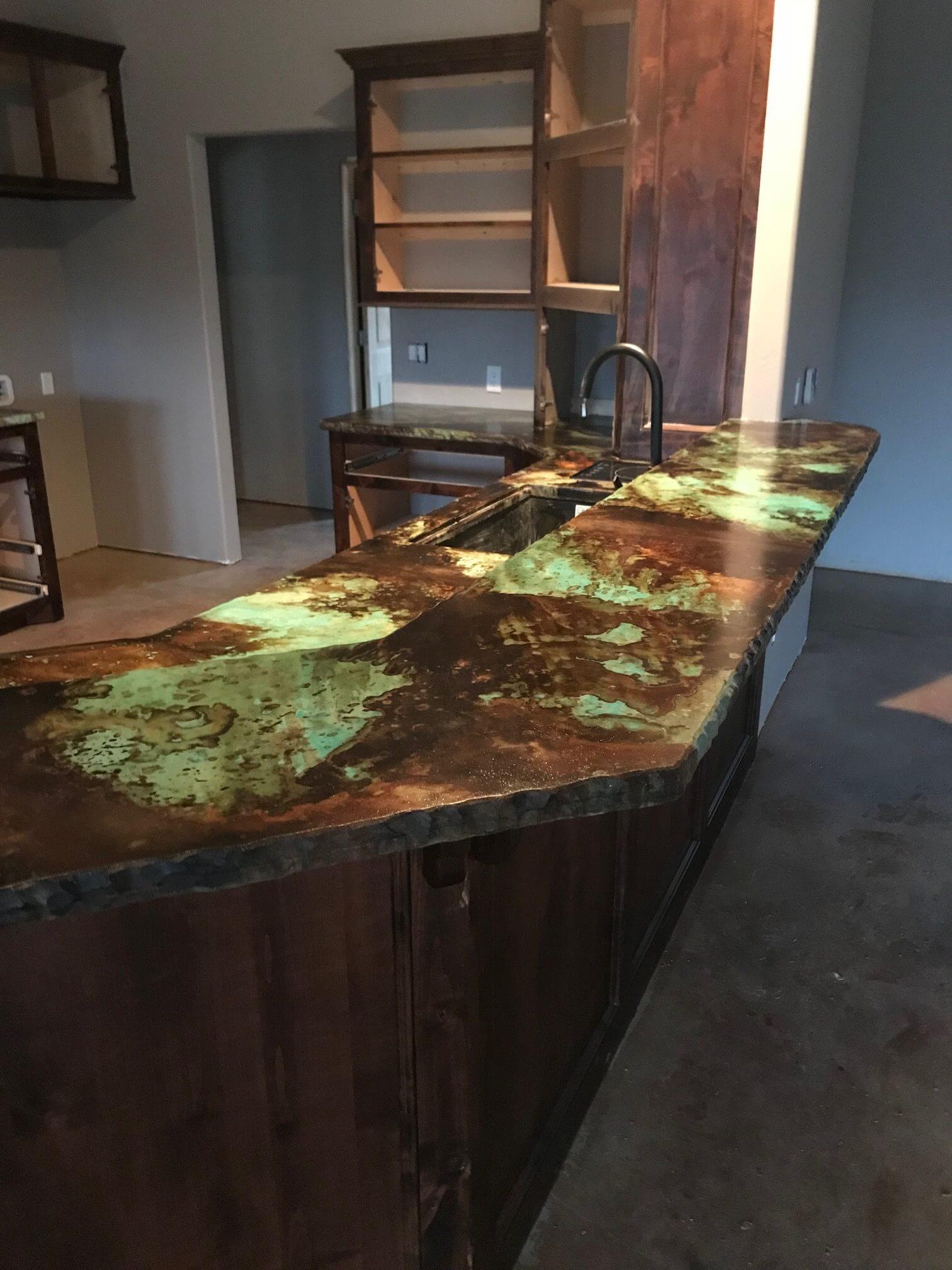
How long does it take to acid stain concrete countertops?
The entire process, from preparation to sealing, can take several days. Concrete countertops need to be fully cured before staining, which can take up to 28 days. Once you begin the staining process, each step requires time for the stain to react, the surface to dry, and the sealer to cure. Expect the project to take about three to five days, depending on drying times.
What colors can I achieve with acid stains on concrete countertops?
Acid stains typically come in earthy tones such as browns, tans, greens, and blues. The final color depends on the minerals in the concrete and how long the acid stain is left to react. The resulting colors can vary from soft, natural shades to deeper, more vibrant hues, and the finish often has a marbled or mottled appearance.
Do I need to seal acid-stained concrete countertops?
Yes, sealing is a crucial step in protecting acid-stained concrete countertops. Concrete is porous and can absorb liquids and become stained or damaged without a proper seal. The sealer protects the surface from water, food, and daily wear, preserving the color and finish of the countertop.

Can I use acid-stained concrete countertops in a kitchen?
Yes, acid-stained concrete countertops can be used in kitchens. However, it’s important to use a food-safe sealer if the countertop comes into contact with food. The stain itself is permanent, but the sealer protects the surface from water, oils, and spills.
How do I maintain acid-stained concrete countertops?
Maintenance is relatively simple. Clean the countertops regularly with a pH-neutral cleaner and avoid harsh chemicals that can damage the sealer. Depending on the type of sealer used, you may need to reseal the countertop every few years. Adding a layer of wax over the sealer can provide extra protection and shine.
Can I stain existing concrete countertops, or do they need to be new?
You can stain both new and existing concrete countertops, as long as the surface is properly prepared. If the concrete has been sealed or treated with any products, these will need to be removed before staining. The surface must be clean, free of contaminants, and in good condition for the stain to adhere properly.
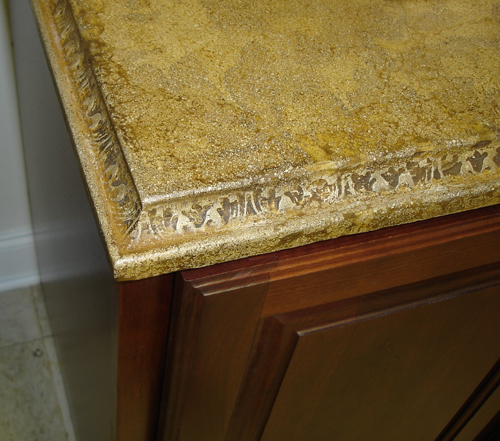
How to Stain Concrete Countertops with Z Aqua-Tint

Related articles:
- Concrete Countertops Outdoor Kitchen
- How To Stain Concrete Countertops
- DIY Concrete Countertop Mix
- Concrete Countertops Made Easy
- Concrete Countertop Overlay
- Black Concrete Countertops
- Marble Look Concrete Countertops
- Light Grey Concrete Countertops
- Concrete Countertop Design Ideas
- Light Colored Concrete Countertops